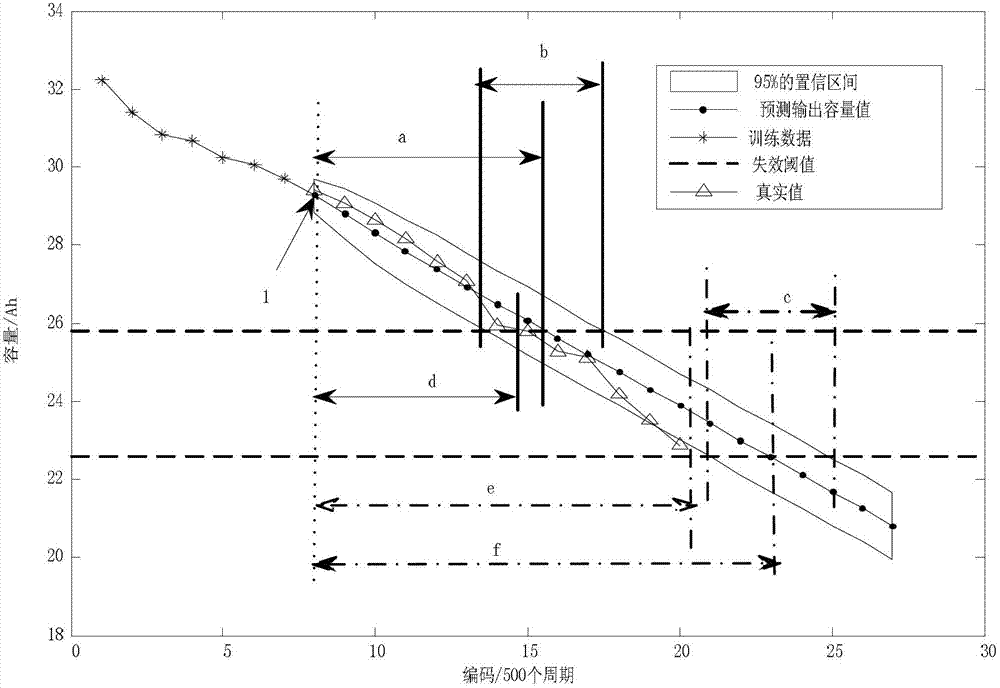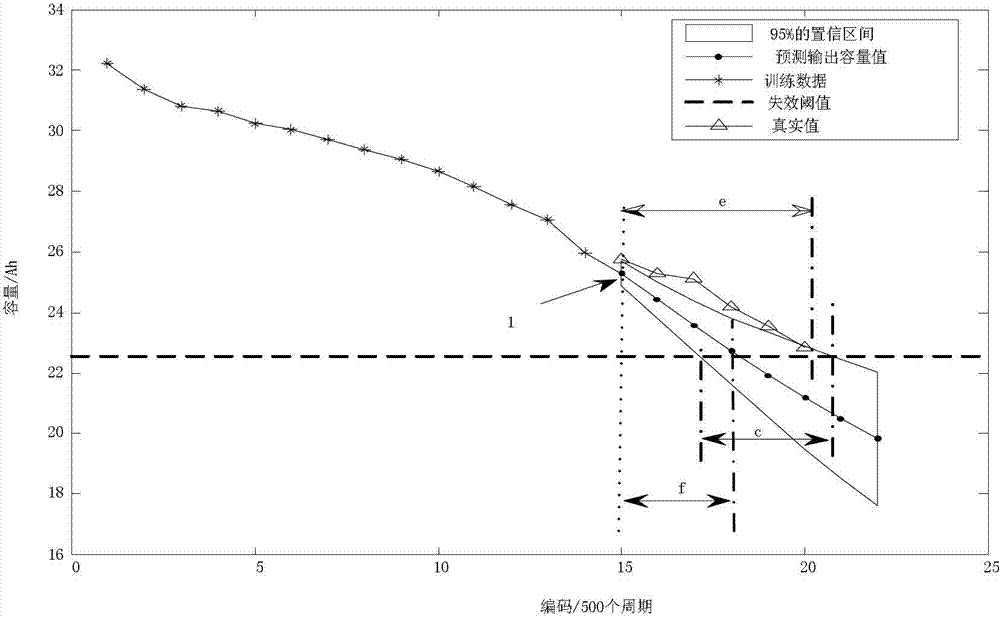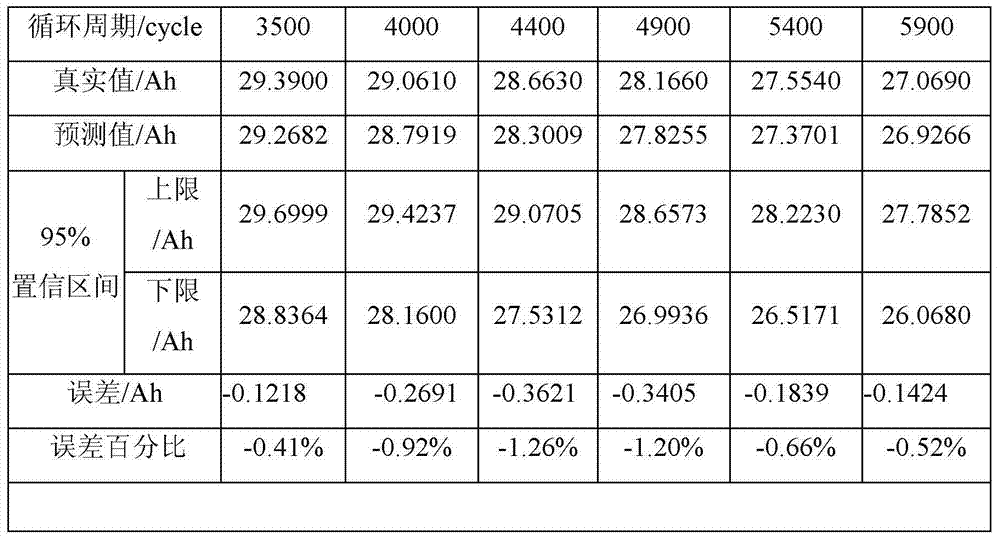Lithium-ion battery capacity estimation and residual cycling life prediction method
A lithium-ion battery, cycle life technology, applied in the direction of measuring electrical variables, measuring electricity, measuring devices, etc., can solve the problems that lithium battery capacity estimation and remaining life prediction cannot be realized, and achieve the effect of capacity and remaining life prediction
- Summary
- Abstract
- Description
- Claims
- Application Information
AI Technical Summary
Problems solved by technology
Method used
Image
Examples
specific Embodiment approach 1
[0020] Specific Embodiments 1. A lithium-ion battery capacity estimation and remaining cycle life prediction method described in this embodiment, the specific steps of the method are:
[0021] Step 1, collect the number of charge and discharge cycles x of the battery to be tested, the discharge voltage and battery capacity of each charge and discharge cycle, and the remaining capacity data z of the battery after each charge and discharge;
[0022] Step 2. The number of charge and discharge cycles x of the collected battery, the discharge voltage and battery capacity of each charge and discharge cycle, and the a / n of the remaining capacity data z of the battery after each charge and discharge are used as training data, and the remaining The (n-a) / n data is used as test data, where n is a positive integer and a is a positive integer smaller than n;
[0023] Step 3, using the segmented cubic Hermite interpolation method to expand the training data, and obtain training data at dif...
specific Embodiment approach 2
[0032] Embodiment 2. This embodiment is a further description of the method for estimating the capacity of a lithium-ion battery and predicting the remaining cycle life described in Embodiment 1. The failure threshold of the battery capacity described in step 8 is 1% of the initial capacity of the battery. 70% or 80%.
specific Embodiment approach 3
[0033] Specific Embodiment 3. This embodiment is a further description of the lithium-ion battery capacity estimation and remaining cycle life prediction method described in Embodiment 1. The area covered by the variance described in step 7 is 95% confidence interval.
PUM
 Login to View More
Login to View More Abstract
Description
Claims
Application Information
 Login to View More
Login to View More - R&D
- Intellectual Property
- Life Sciences
- Materials
- Tech Scout
- Unparalleled Data Quality
- Higher Quality Content
- 60% Fewer Hallucinations
Browse by: Latest US Patents, China's latest patents, Technical Efficacy Thesaurus, Application Domain, Technology Topic, Popular Technical Reports.
© 2025 PatSnap. All rights reserved.Legal|Privacy policy|Modern Slavery Act Transparency Statement|Sitemap|About US| Contact US: help@patsnap.com



